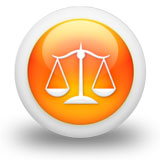We need your consent to use the individual data so that you can see information about your interests, among other things. Click "OK" to give your consent.
ASTM F2550-13
Standard Practice for Locating Leaks in Sewer Pipes By Measuring the Variation of Electric Current Flow Through the Pipe Wall
STANDARD published on 1.11.2013
The information about the standard:
Designation standards: ASTM F2550-13
Note: WITHDRAWN
Publication date standards: 1.11.2013
SKU: NS-54117
The number of pages: 7
Approximate weight : 21 g (0.05 lbs)
Country: American technical standard
Category: Technical standards ASTM
The category - similar standards:
Annotation of standard text ASTM F2550-13 :
Keywords:
electric current flow, infiltration, leaks, sewer pipes, ICS Number Code 93.030 (External sewerage systems)
Additional information
| Significance and Use |
|
3.1 The testing of sewers for leaks is a regular practice necessary for the maintenance and optimal performance of sewer collection systems so remedial action can be prioritized, designed, and carried out to reduce infiltration and exfiltration. 3.2 This practice serves as a means to detect and locate all types of pipe defects that are potential sources of water leaks either into or out of electrically non-conducting pipes. Leaking joints and defective service connections are detected that often may not show as a defect when viewed from inside the pipe. The scan data may be processed and analyzed to provide some information on the size and type of pipe defect. (3.3 This practice applies to mainline and lateral gravity flow storm sewers, sanitary sewers, and combined sewers fabricated from electrically non-conducting material with diameters between 3 and 60 in. (75 and 1500 mm). The pipes must be free of obstructions that prevent the probe passing through the pipe. |
| 1. Scope |
|
1.1 This practice covers procedures for measuring the variation of electric current flow to detect and locate potential pipe leaks in pipes fabricated from electrically nonconductive materials such as brick, clay, concrete, and plastic pipes (that is, reinforced and non-reinforced). The method uses the variation of electric current flow through the pipe wall to locate defects that are potential water leakage paths either into or out of the pipe. 1.2 This practice applies to mainline and lateral gravity flow storm sewers, sanitary sewers, and combined sewers with diameters between 3 and 60 in. (75 and 1500 mm). The pipes must be free of obstructions that prevent the probe passing through the pipe. 1.3 The scanning process requires access to sewers, filling sewers, and operations along roadways that are safety hazards. This standard does not describe the hazards likely to be encountered or the safety procedures that must be carried out when operating in these hazardous environments. (1.4 The measurement of the variation of electric current requires the insertion of various items into a sewer. There is always a risk that due to unknown structural conditions in the sewer such items may become lodged in the pipe or may cause the state of a sewer in poor structural condition to further deteriorate. This standard does not describe methods to assess the structural risk of a sewer. 1.5 The values stated in inch-pound units are to be regarded as standard. The values given in parentheses are mathematical conversions to SI units that are provided for information only and are not considered standard. 1.6 This standard does not purport to address all of the safety concerns, if any, associated with its use. It is the responsibility of the user of this standard to establish appropriate safety and health practices and to determine the applicability of regulatory limitations prior to use. |
Similar standards:
Historical
1.4.2012
Historical
1.5.2011
Historical
1.5.2009
Historical
1.5.2010
Historical
1.1.2013
Historical
1.5.2009
We recommend:
Updating of laws
Do you want to be sure about the validity of used regulations?
We offer you a solution so that you could use valid and updated legislative regulations.
Would you like to get more information? Look at this page.



 ASTM F1499-12
ASTM F1499-12 ASTM F1962-11
ASTM F1962-11 ASTM F2233-03(2009)..
ASTM F2233-03(2009).. ASTM F2304-10
ASTM F2304-10 ASTM F2306/F2306M-13..
ASTM F2306/F2306M-13.. ASTM F2414-04(2009)..
ASTM F2414-04(2009)..
 Cookies
Cookies
